Bulgaria delivers
After about two months in Türkiye, Armenia and Georgia we felt a little spoiled for travel experiences. Those three countries, and especially Türkiye, are fabulous places to explore at your own pace and we felt a little hungover when we entered Bulgaria. But after four days in this former communist country, which is now in the EU and part of NATO but still finding it’s feet in other ways, we felt we had found a great new place to explore.
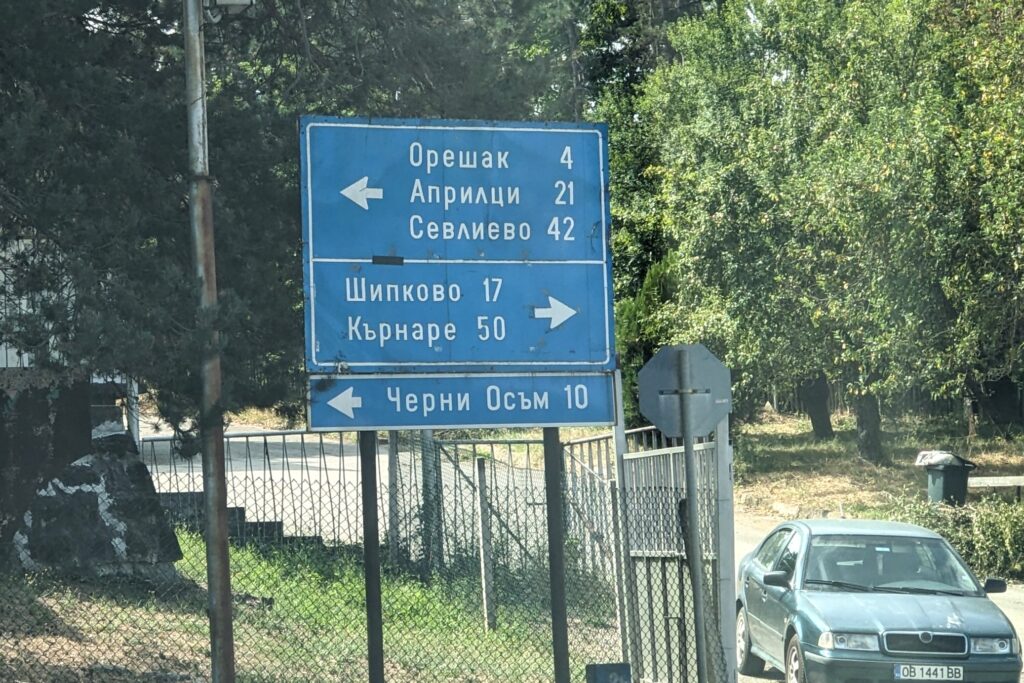
And it was fun comparing what we’d seen in Bulgaria so far to what we had experienced in Türkiye. For one thing, the drivers are much more normal, most of them seem to understand the concept of speed limits, they use their turn signals and even turn their head for a look before merging. They are heavy smokers, even in restaurants, most of their young people seem to speak a bit of English, their men like to walk around without their shirts, they don’t have car washes everywhere and they don’t have their social life based on sitting in the shade and drinking a cup of chai.
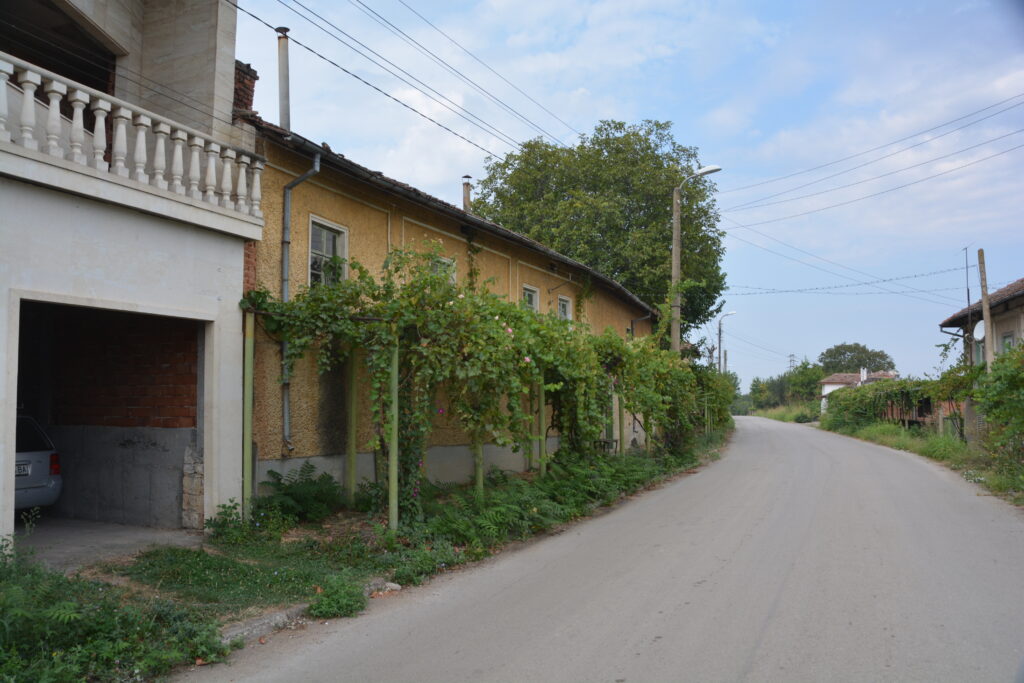
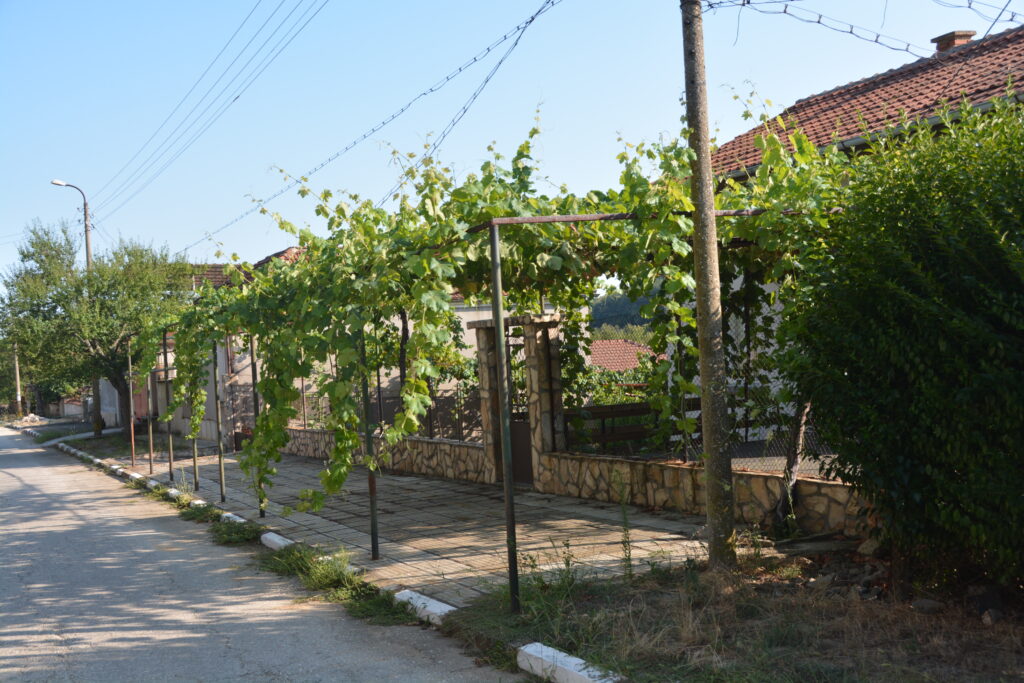
The other thing Bulgaria has celebrated is their history of Thracian kings, something we knew zero about. Thrace was a huge area including eastern Greece, the European part of Türkiye and a big chunk of Bulgaria way back around the 5th to the 3rd century BC. And it seems a lot of their kings were buried in an area around the town of Kazanlak in what is now referred to as the Valley of Thracian Kings.
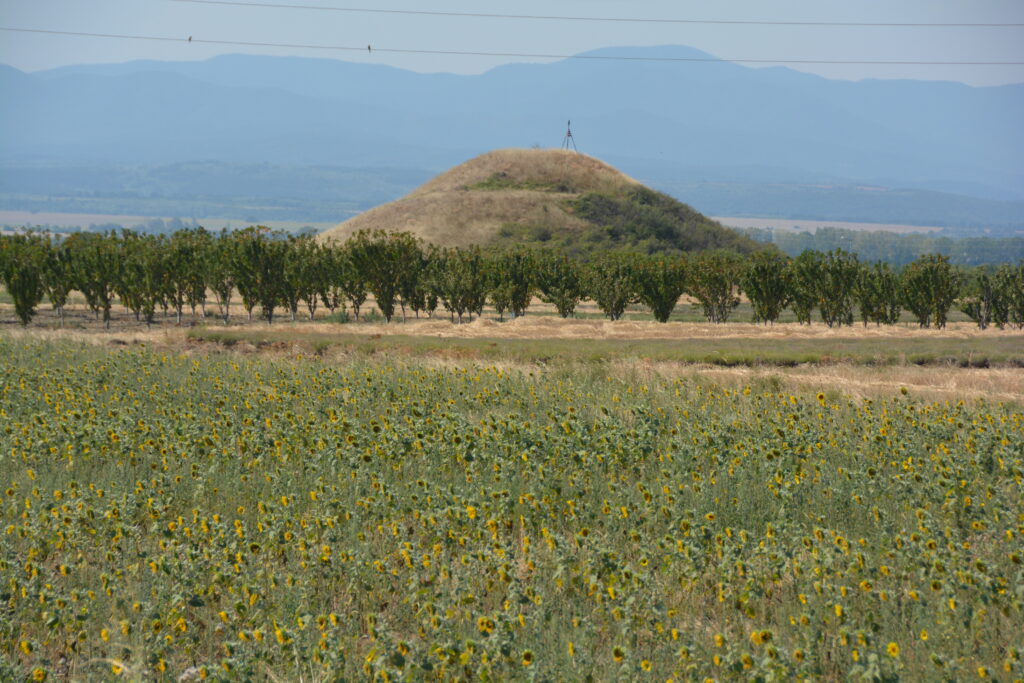
We visited the tomb of one of their most important kings, Seuthes III. The tombs are basically huge mounds of earth which contain a small tomb area protected by stone walkways, arches and a small domed ceiling. The tombs are not overly-impressive as a stand-alone experience but you have to remember they were built about 2,500 years ago which is pretty cool.
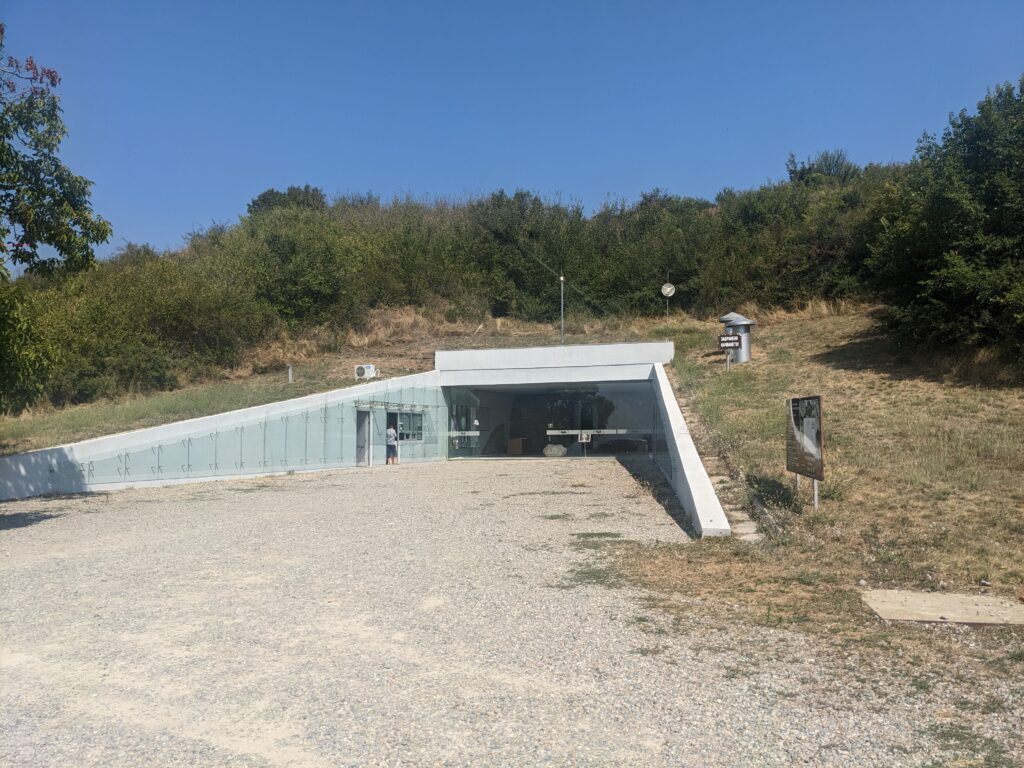
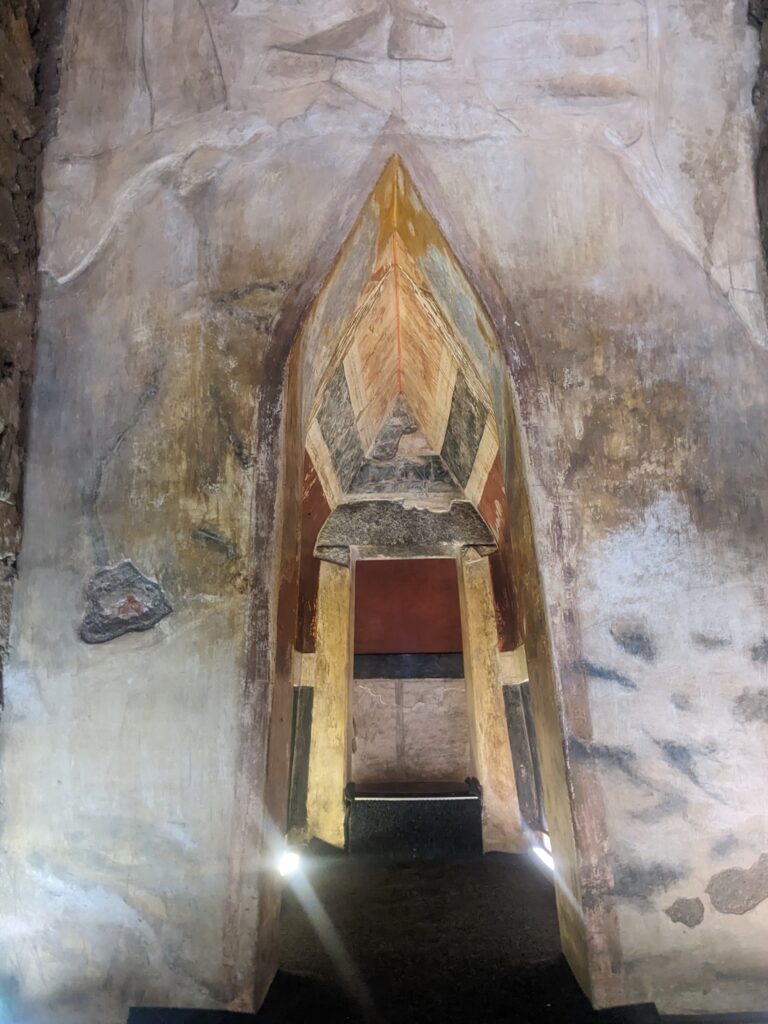
We then jumped forward about 24 centuries to when Bulgaria was deeply communist and heavily influenced by what was happening in the USSR. They have built many roadside monuments extolling the power of the people (ironically the people had no power) and the glory of the state (ironically the state ended up dissolving). But one monument stands out above all others and we drove up a long and steep switchback track to see what it was all about.
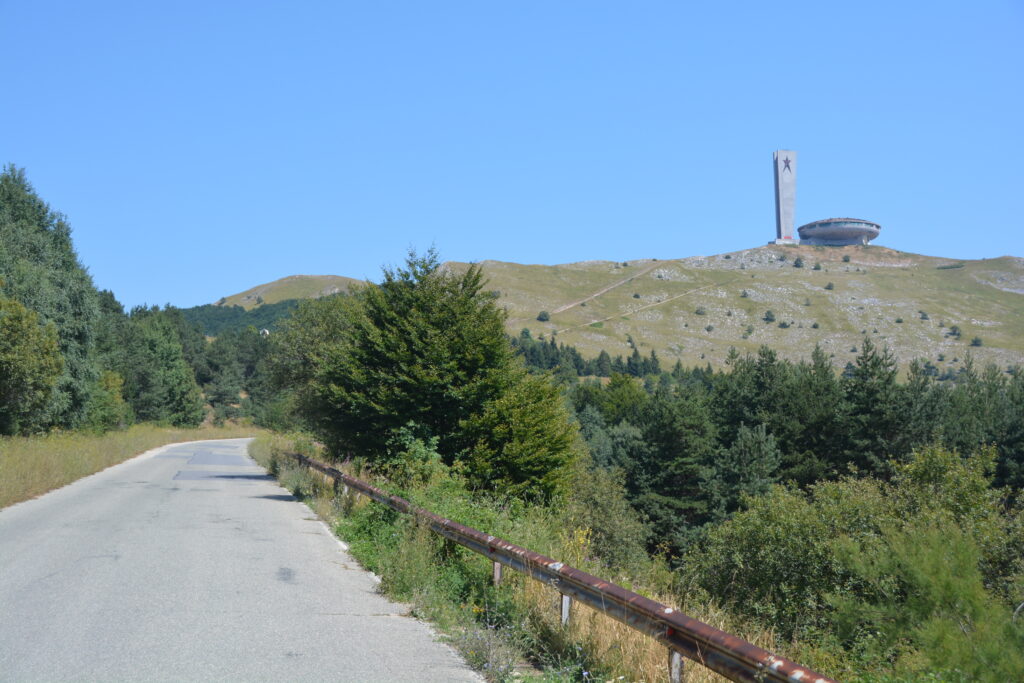
The Buzludzha Monument was finished in 1981 to commemorate the establishment of the socialist movement in Bulgaria in 1891. The monument only lasted ten years before the communist party lost the country’s first election and has been in decline ever since. Today the monument is a ghastly but somewhat fascinating look into the country’s past and it’s attempt to move forward.
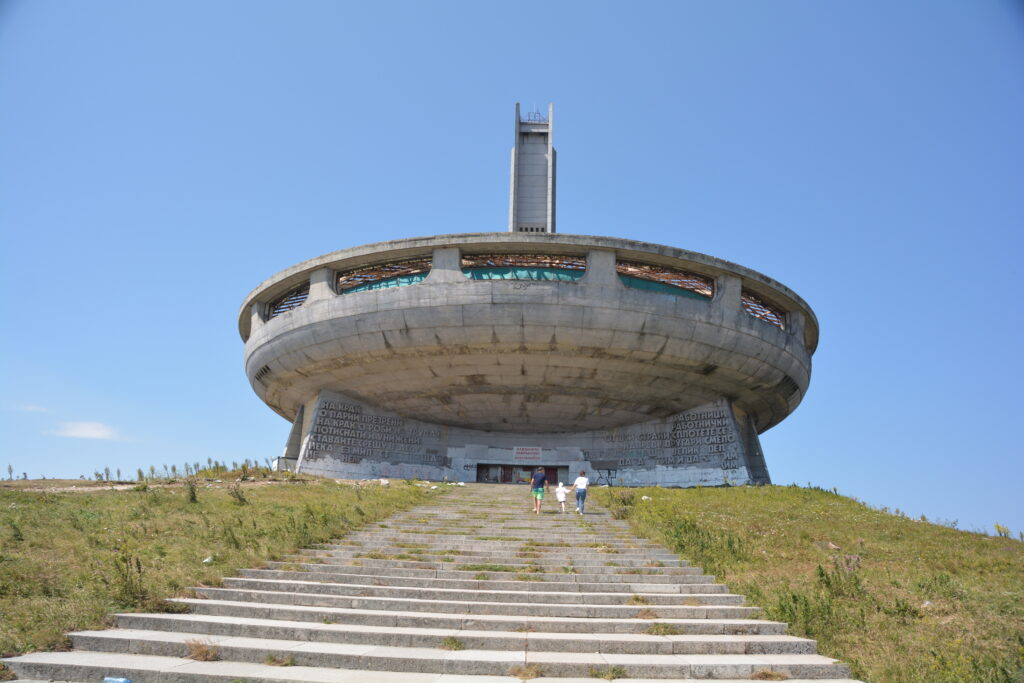
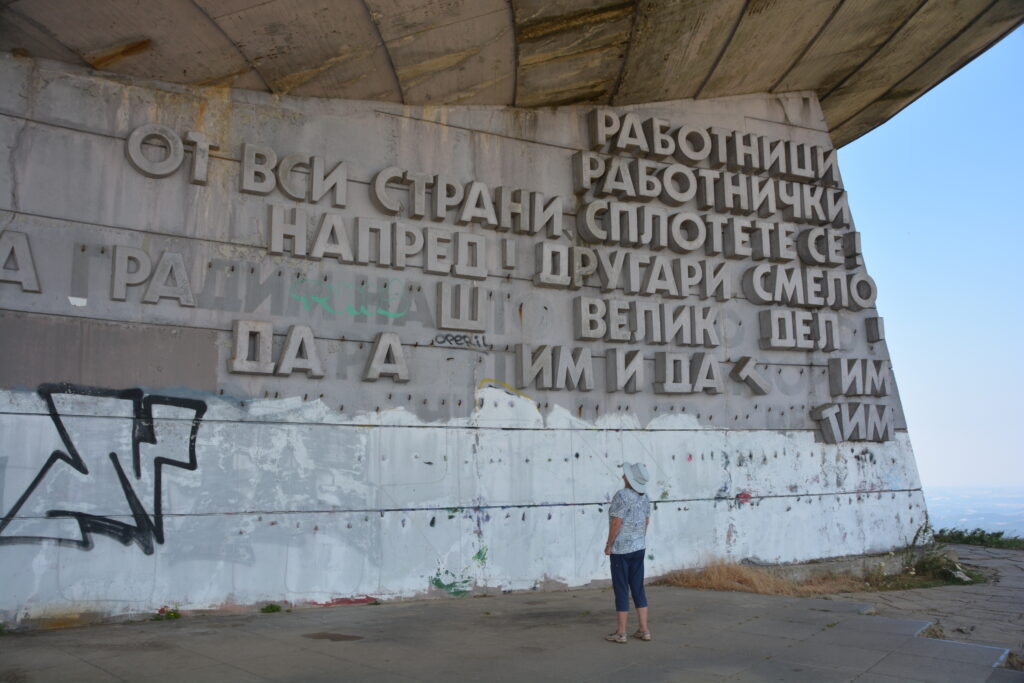
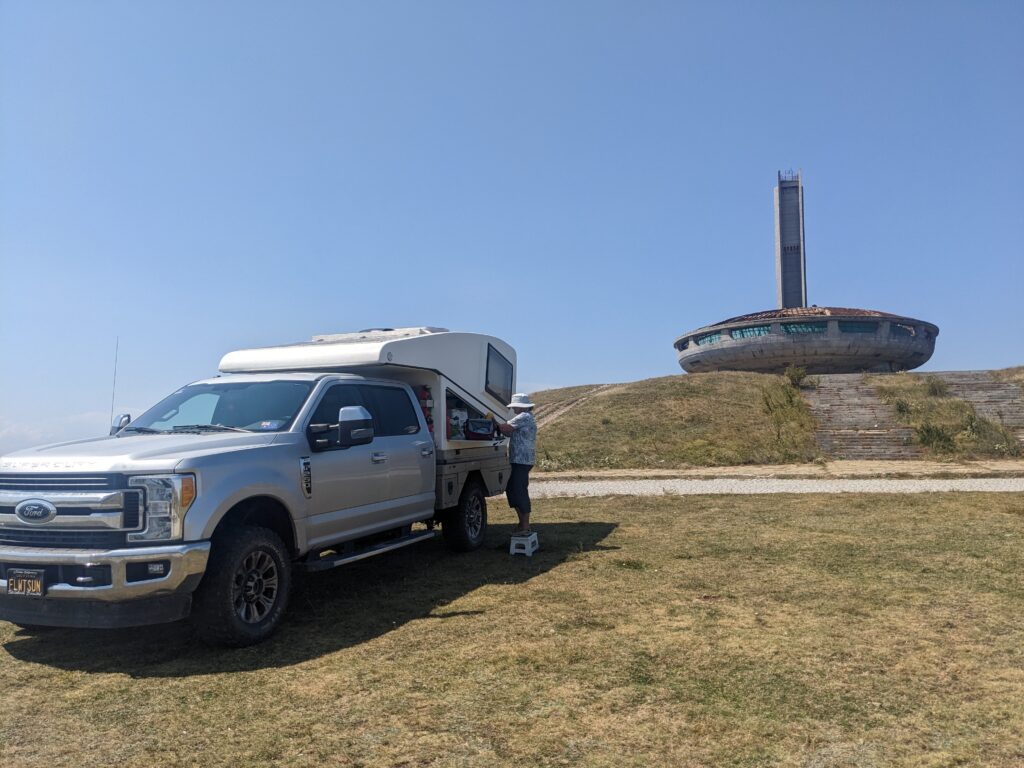
We also visited another Thracian King’s tomb in Kazanlak and having seen two tombs plus getting a grip on their place in history we decided that was enough on Thracian kings and moved on to the major regional town of Veliko Tarnovo with it’s famous Tsarevets Fortress.
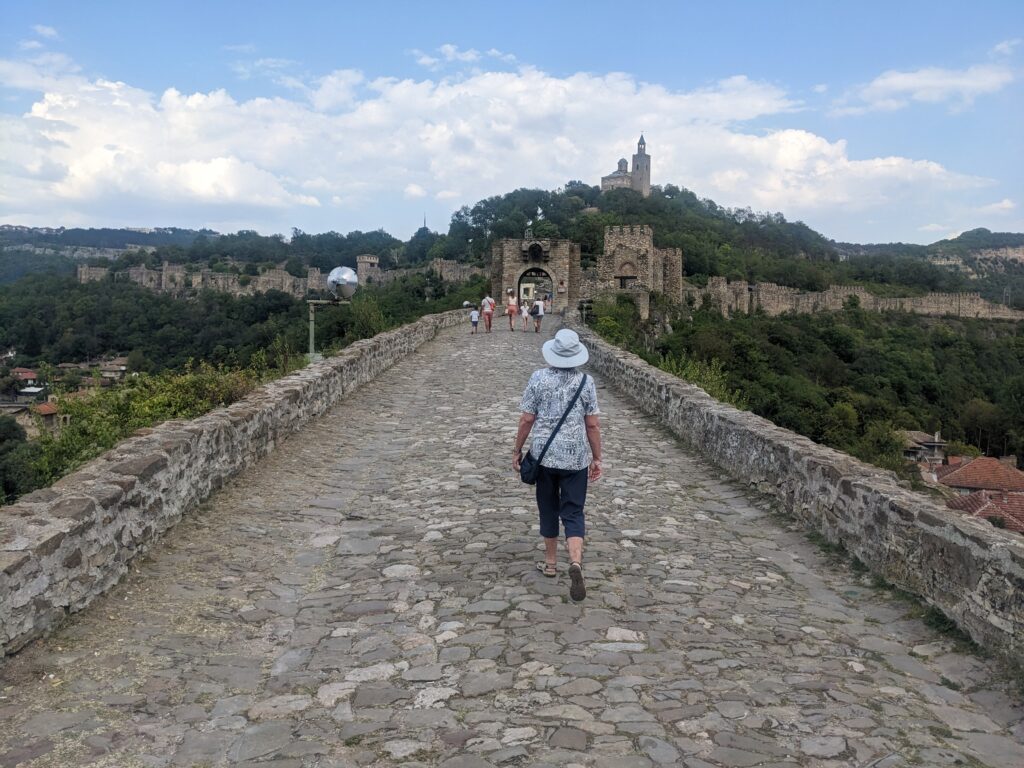
Built primarily in the 14th century to house Bulgarian kings and used for hundreds of years afterwards by the Ottoman rulers, the fortress – and the town for that matter – today sits on a dominating high position in the bend of the Yantra River and provided a fabulous look into life in this region all those years ago. We loved the town and the fortress – very impressive stuff.
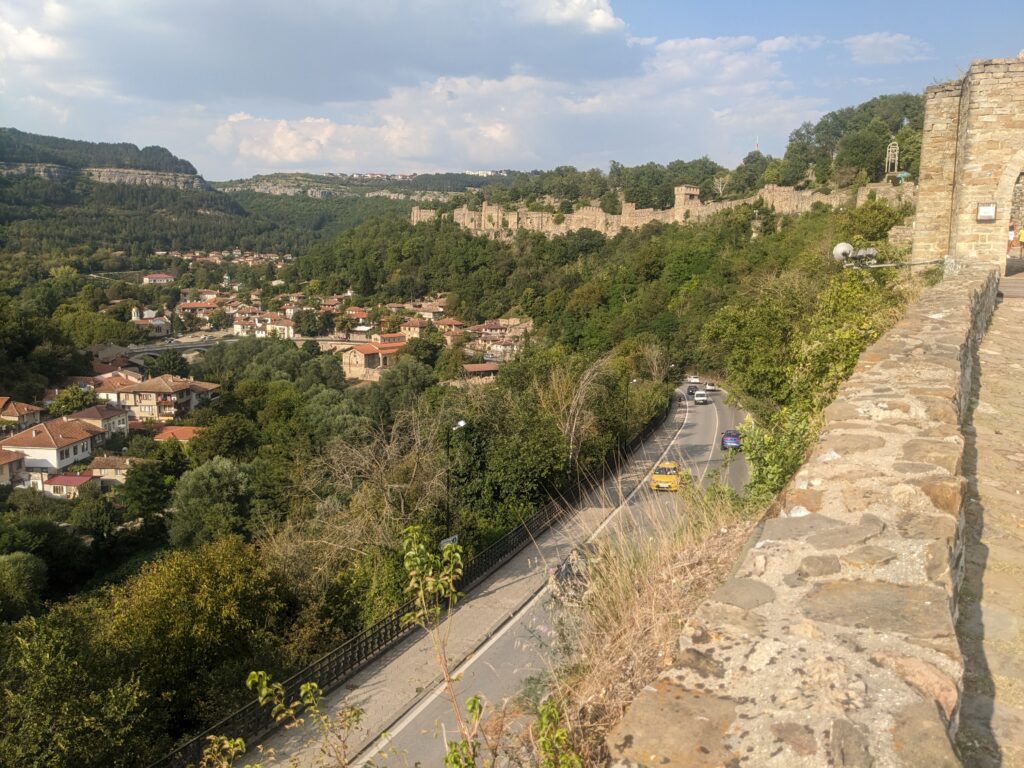
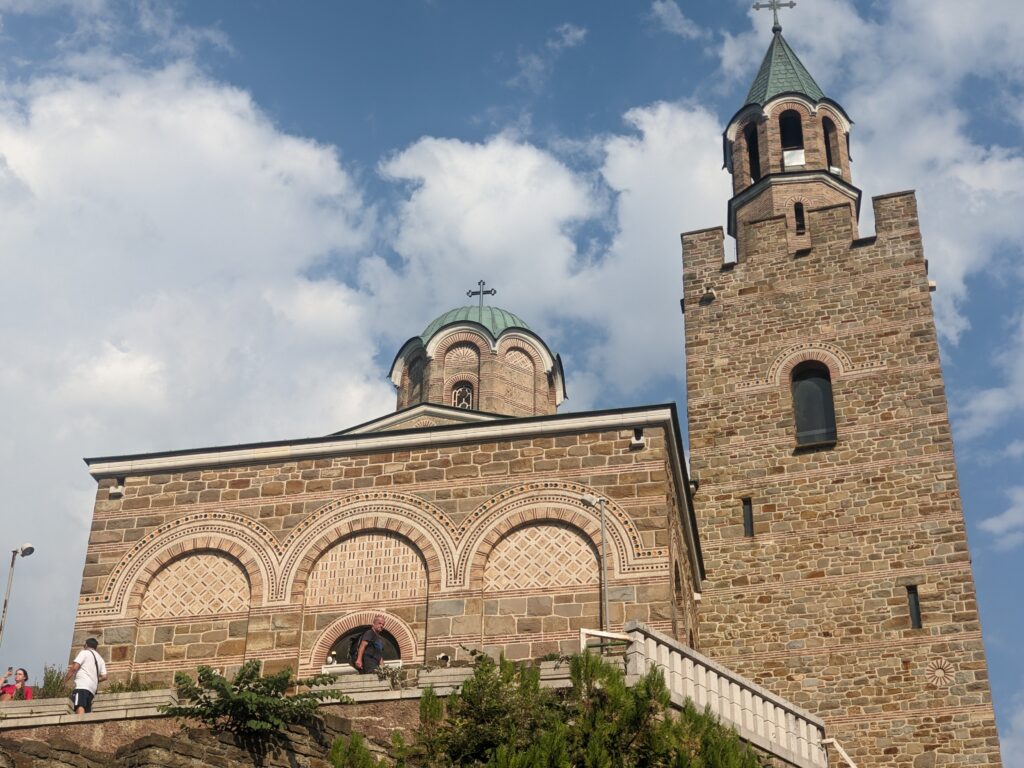
We had been working hard for a couple of days in weather reaching 39°C (102°F) so we opted to camp that night at an upmarket campsite with swimming pool and all the extras. The next day we headed north to another UNESCO World Heritage Site, the Ivanova church caves. To get there we passed through beautiful hay, corn and sunflower fields blanketing the undulating plains, quite a sight on a blistering 39°C (102°F) day when it didn’t seem anything could survive, including us.
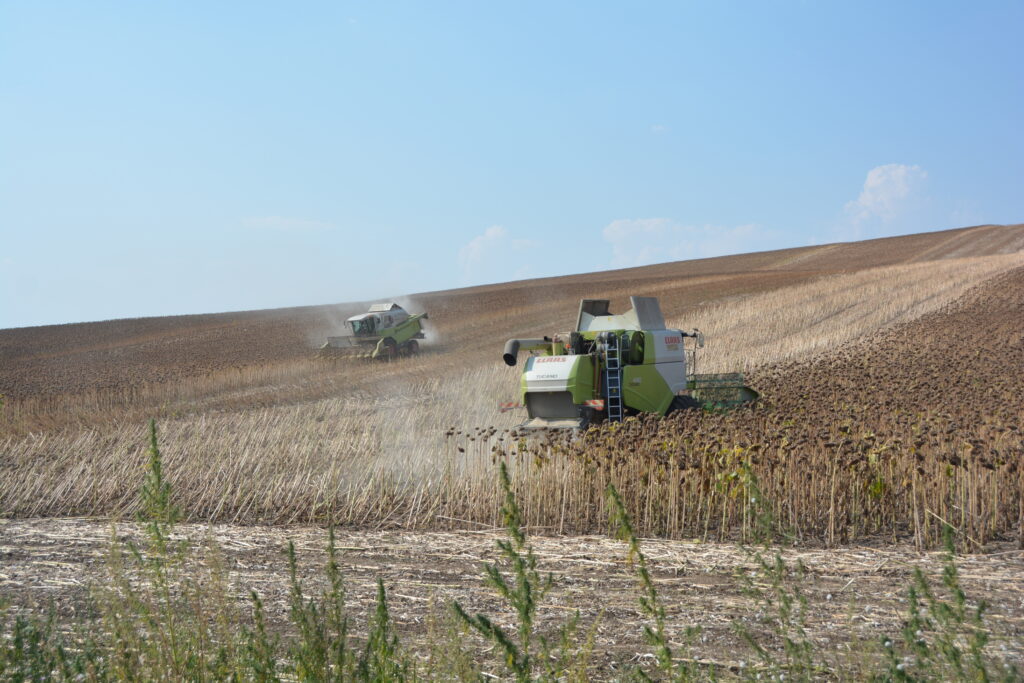
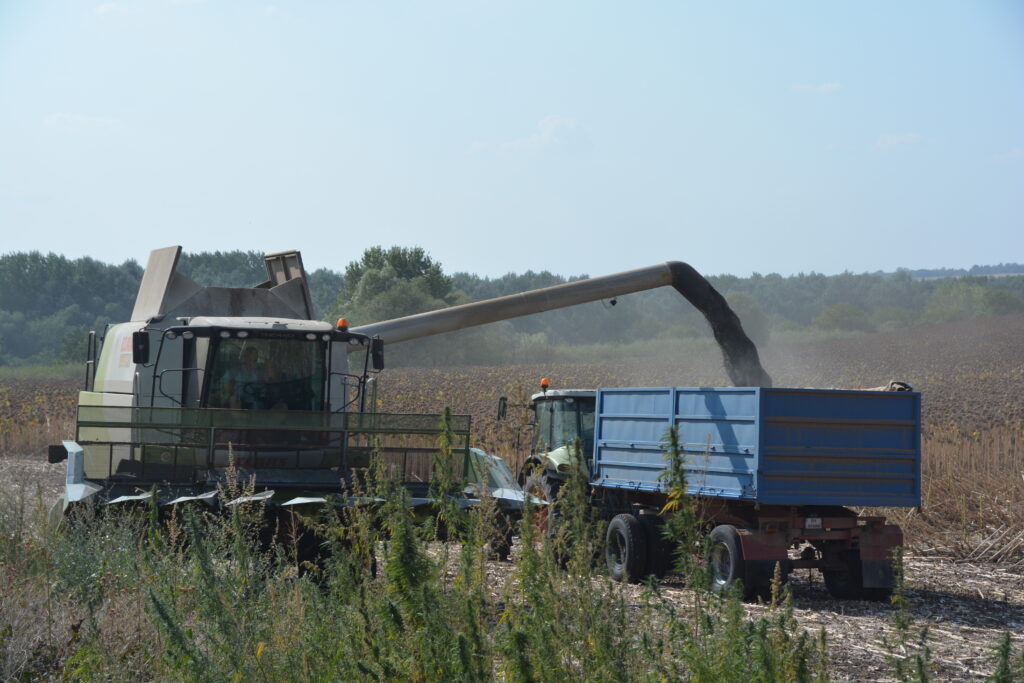
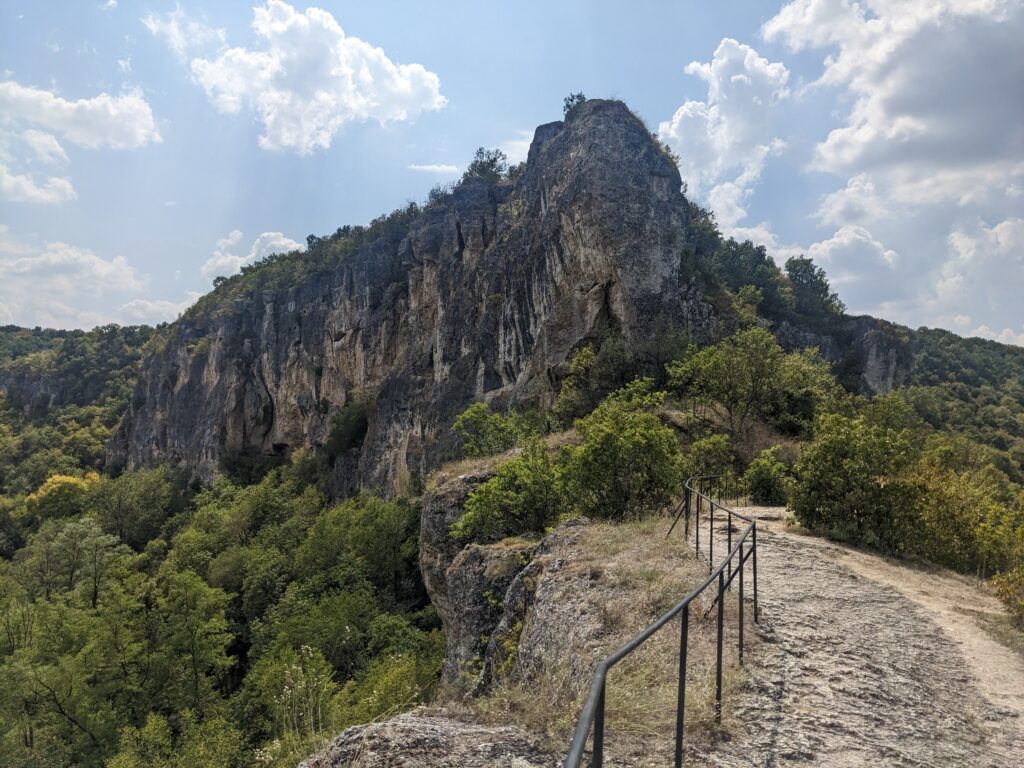
We should be used to it by now but we were astounded to find another 11th century site where monks carved out churches and living quarters into the rock faces of mountains which provided them the obscurity and protection they needed. And on top of that, beautiful frescos still exist on the walls and ceiling of some of the sites and we were lucky enough to check them out after a stinking hot walk up the cliff face.
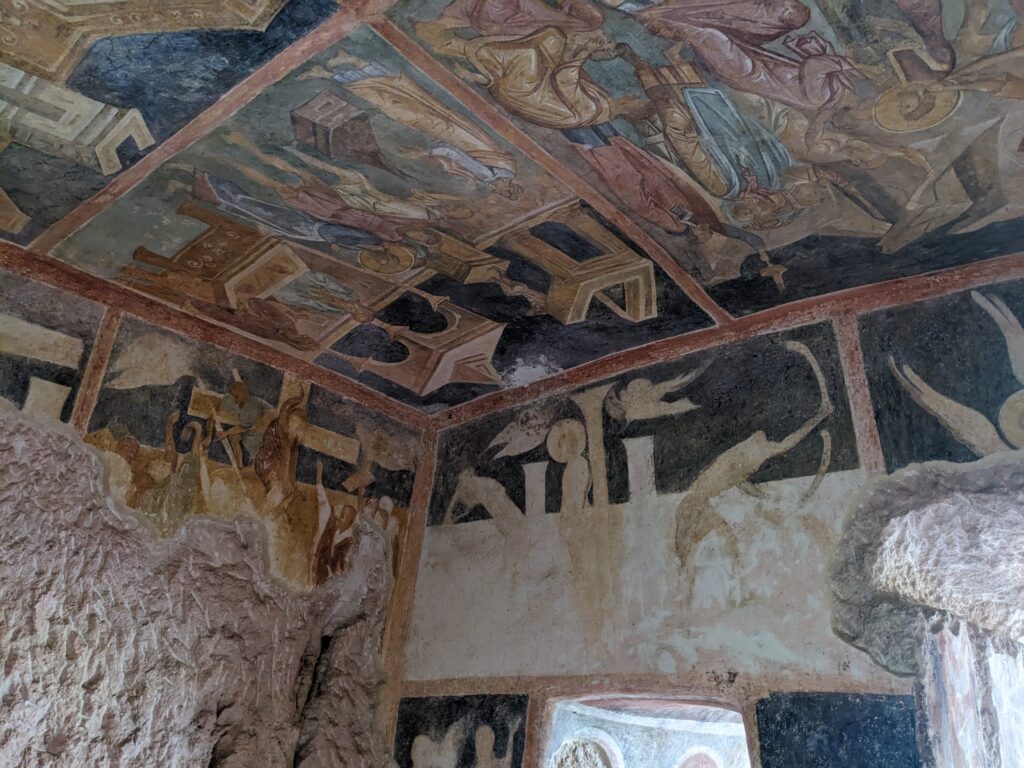
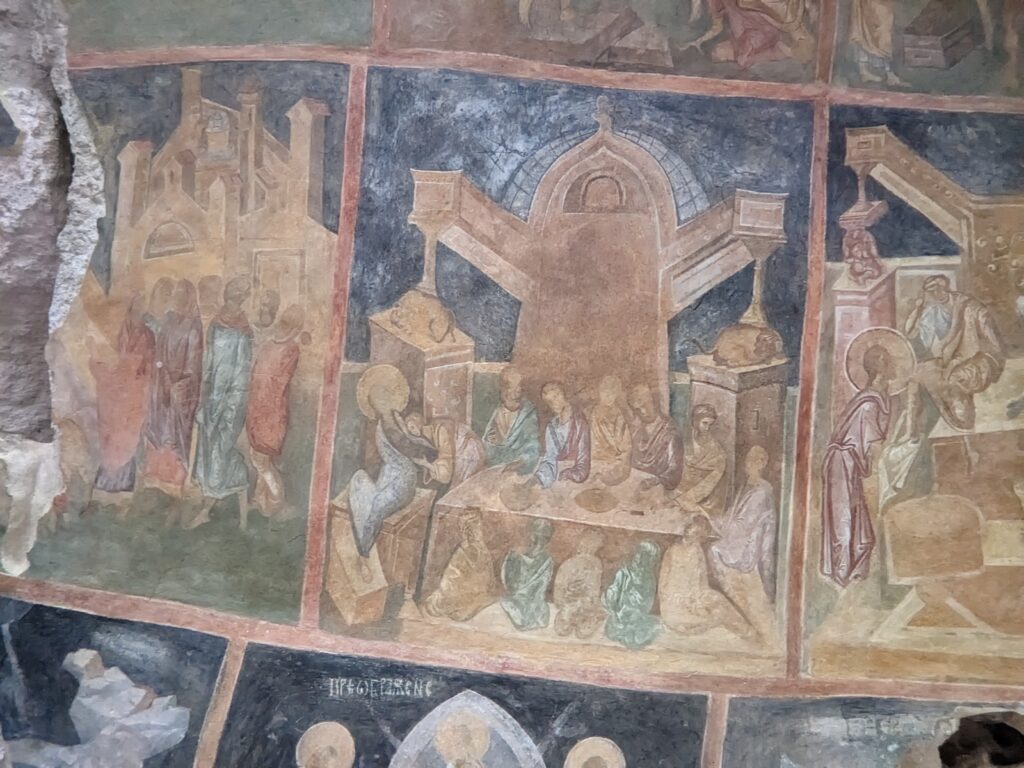
From Ivanova we headed west-ish across northern Bulgaria, camping for the night in a carpark of the very cool little Krushova Falls in a national park of the same name. But the killer heat through the night made this a very sticky affair.
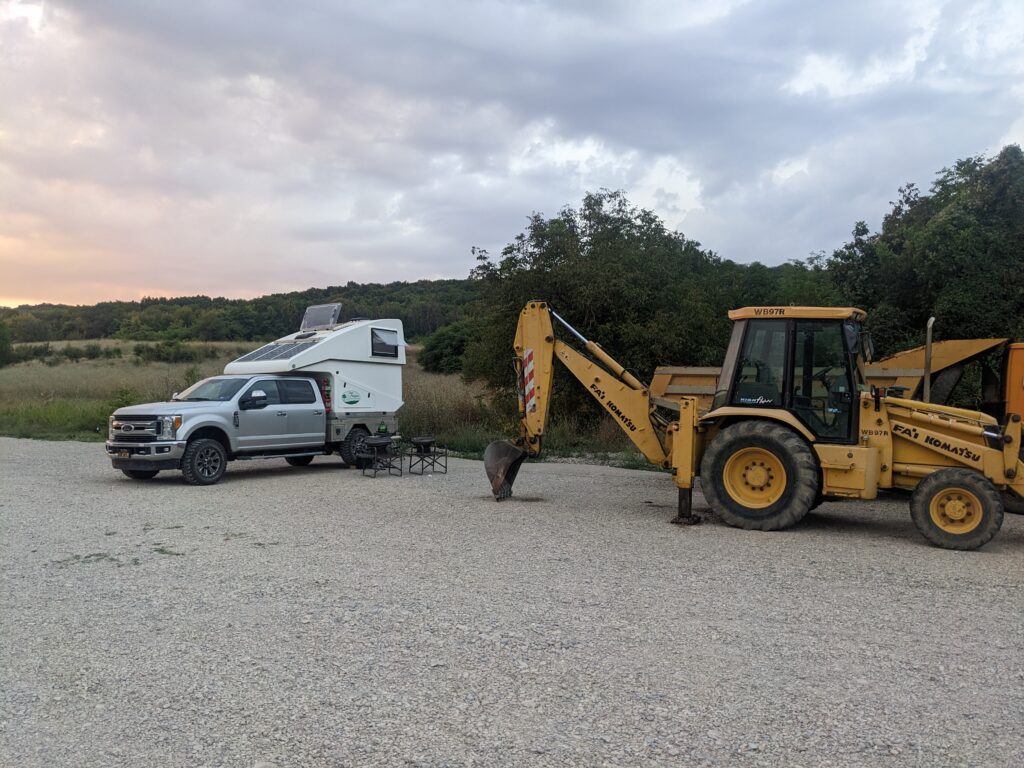
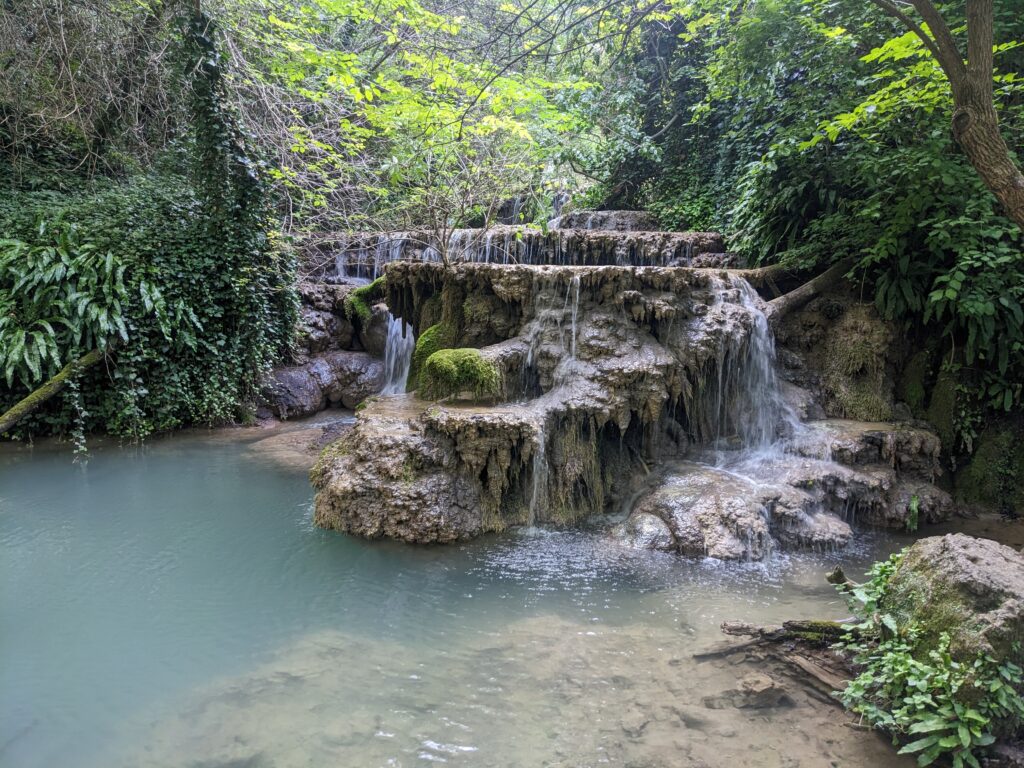
We still had some bandwidth for Bulgarian Eastern Orthodox monasteries so headed into the hills for the Troyan Monastery, one of the biggest monasteries in the country. Largely rebuilt in the mid 19th century, it featured beautiful wall-to-wall frescos of religious scenes in the church and some cooling courtyards under large conifers. But step outside the shade and beware!
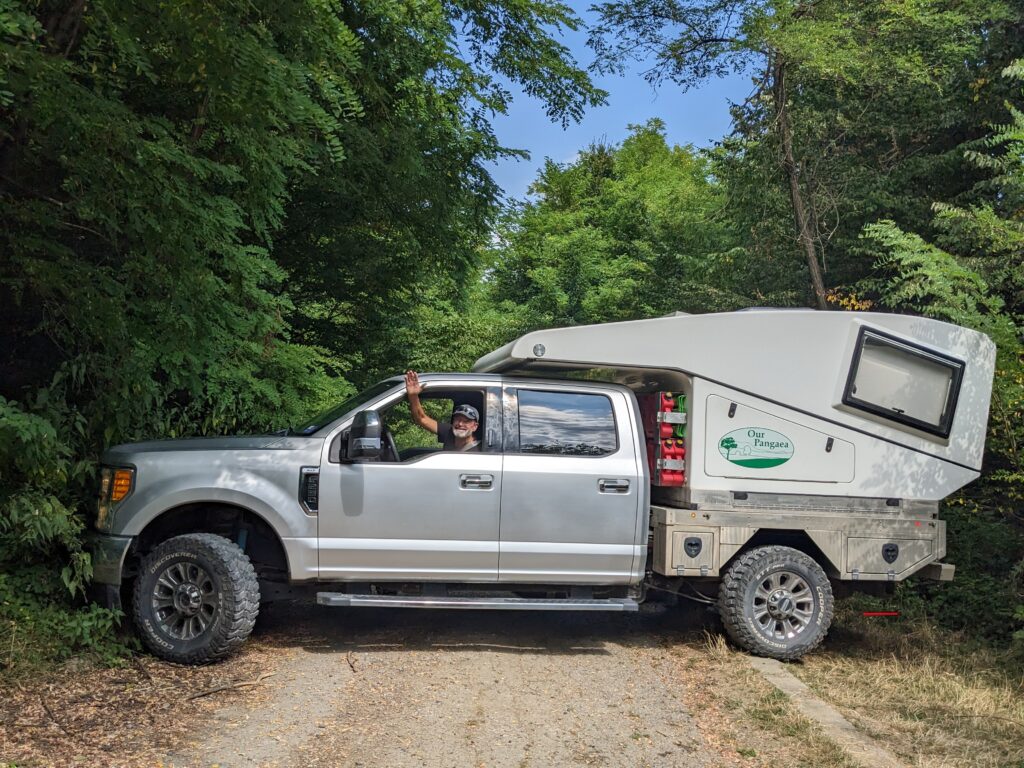
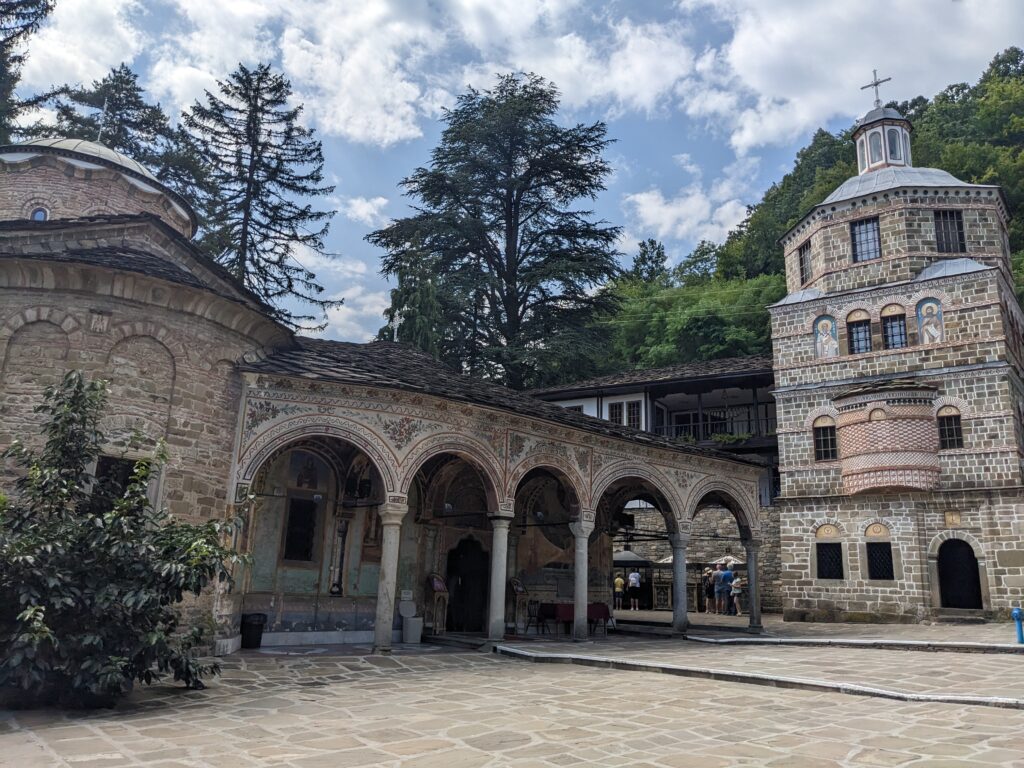
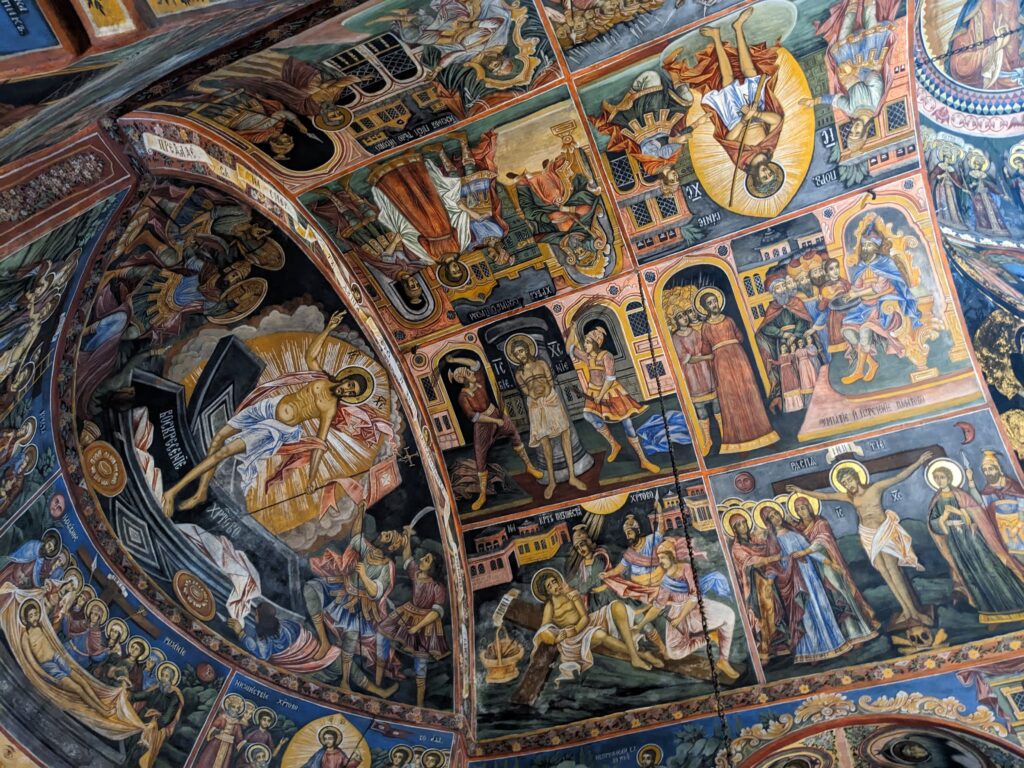
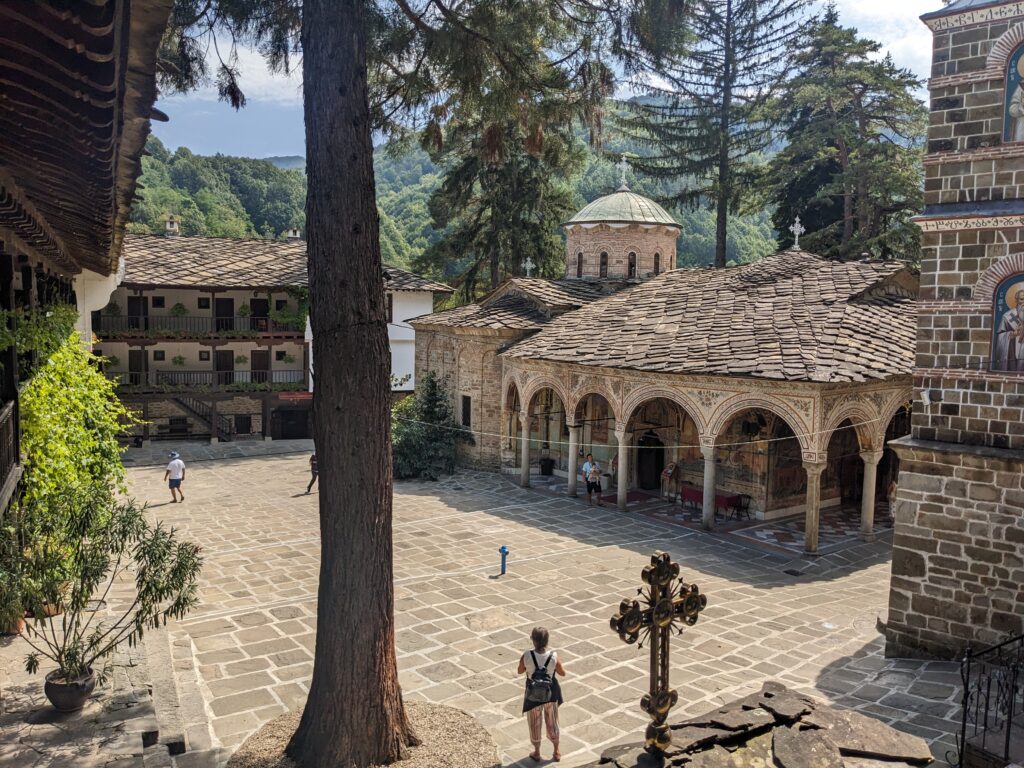
The monastery was at the base of the North Balkan Mountains, a large range of mountains that run roughly east to west in Bulgaria. We had crossed them once but decided to follow the road over the Troyan Pass and drop down to the southern side of the range before heading towards Sophia.
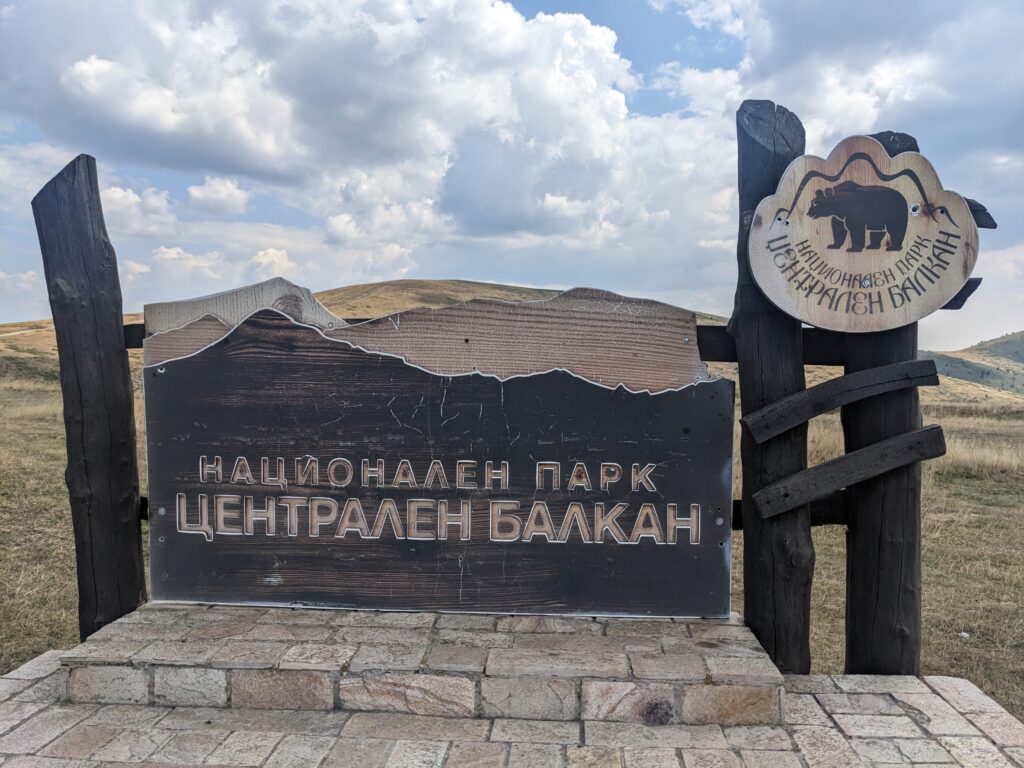
This mountain range, and the Central Balkans National Park which covers a large section of the mountains, provided a beautiful winding drive through the forests and at the top, a huge cement monument. Give the Bulgarians a mountain and they’ll give you a awful monument.
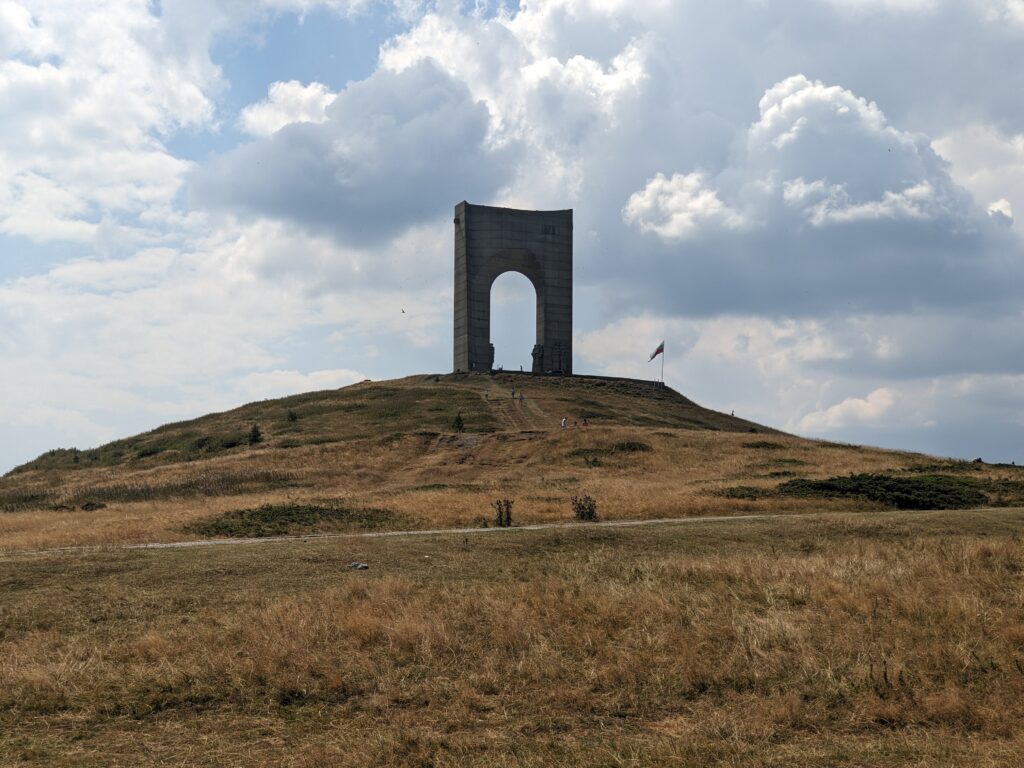
The drive into Sophia was equally beautiful and we camped at a lifeless gravel RV storage yard for showers and a rest before tackling the nation’s capital.
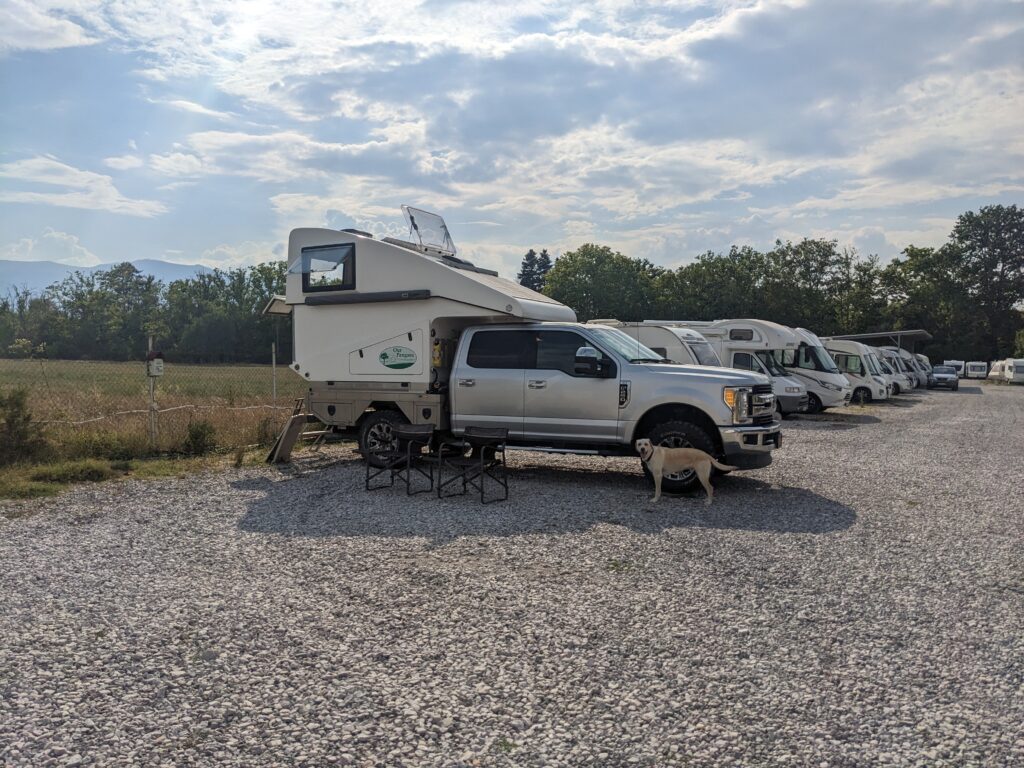
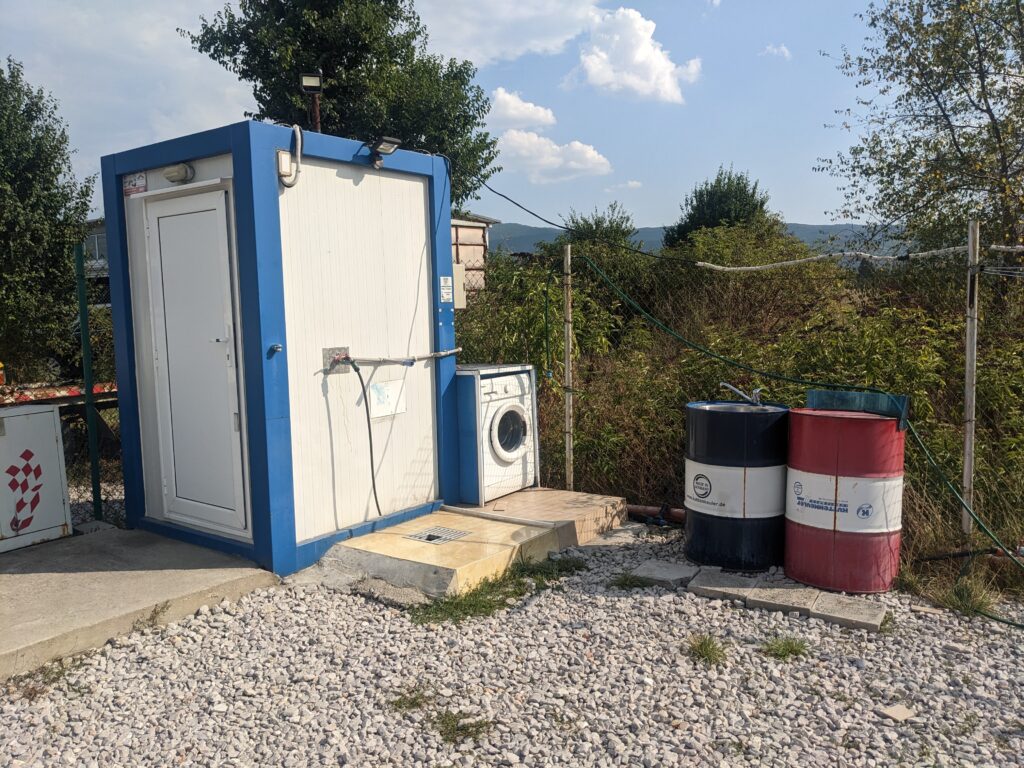
Sofia is a modern city of 1.2 million people with a long history and a very contemporary look today. We drove on broad multi-laned streets past shiny new buildings and a buzz that is the same in any great city of the world. We parked at the city – and the country’s – most famous landmark, the Alexander Nevsky Memorial Church, and walked inside to have a look.
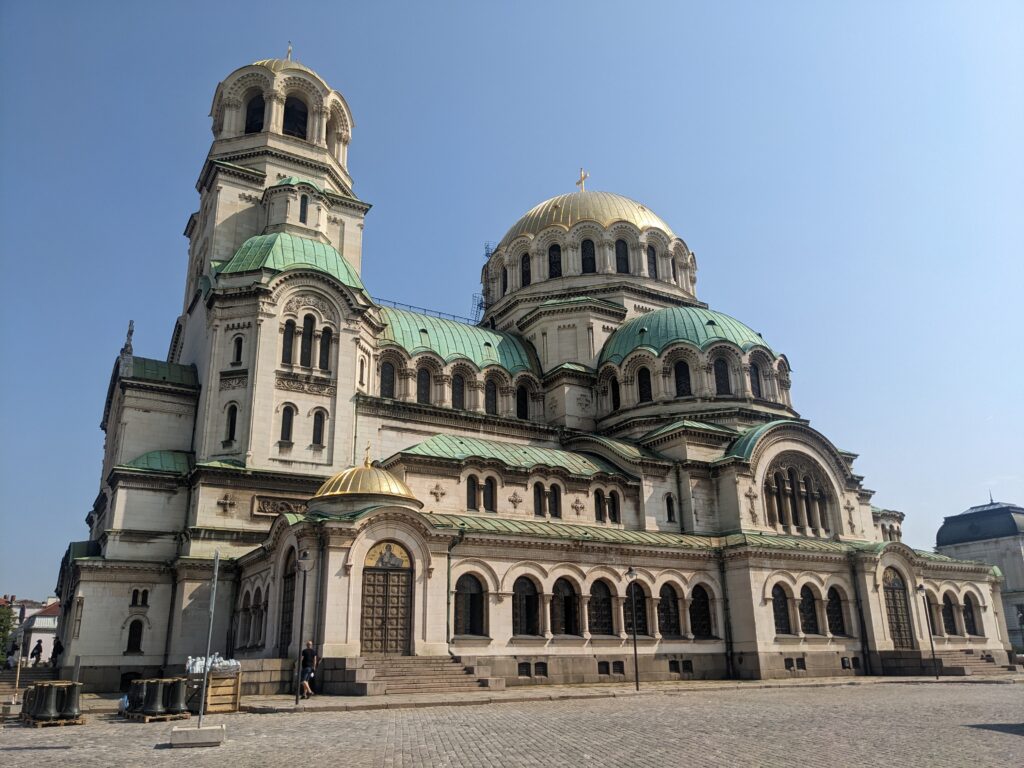
The church is only 100 years old and commemorates the freedom fighters who helped liberate Bulgaria from the evil clutches of the Ottoman Empire in the late 19th century. If you know your Bulgarian Orthodox architecture you’ll know this one is a beauty and we loved the religious frescos that adorned every square inch of the interior.
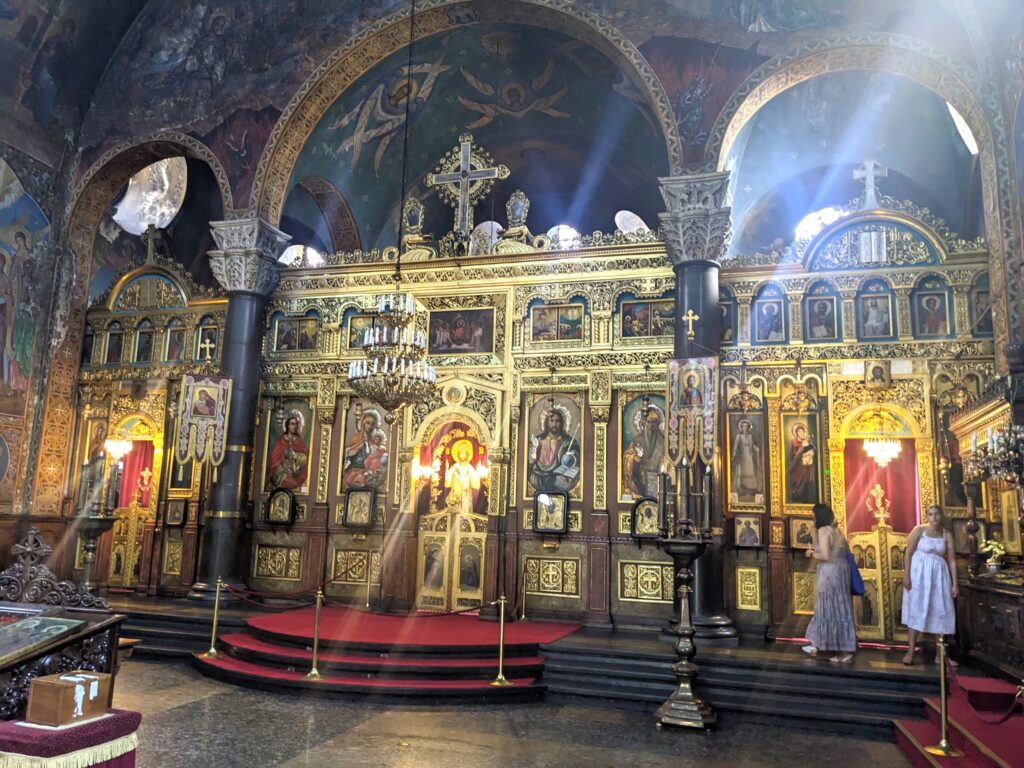
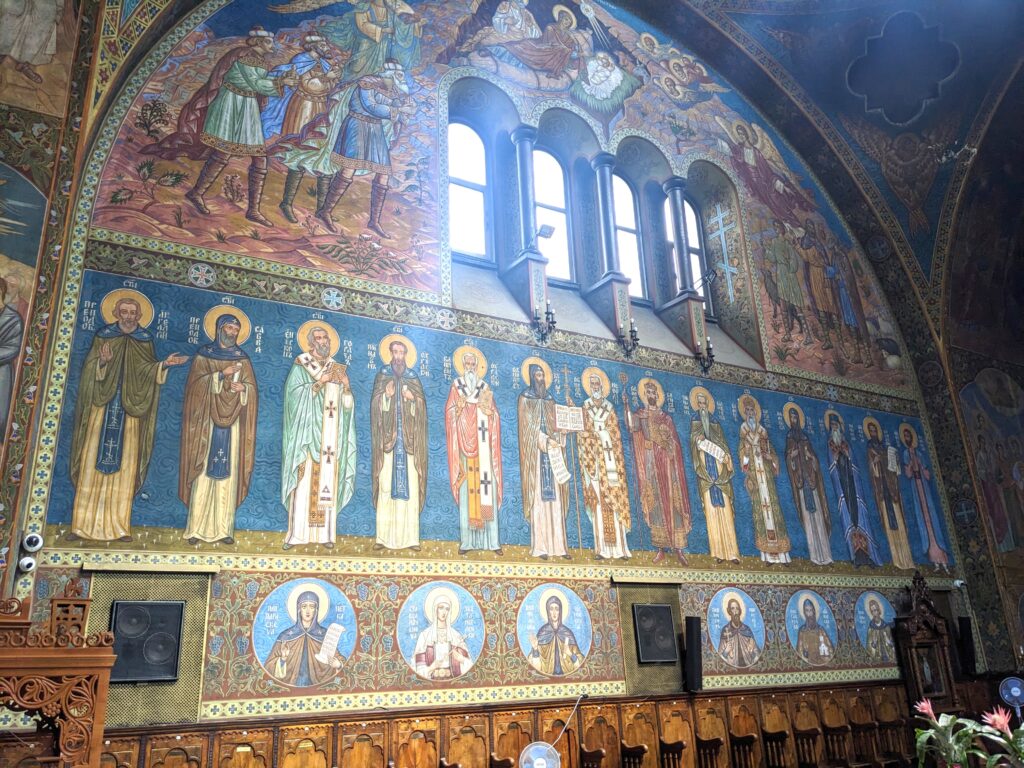
But after the Nevsky Church the tourist attractions in Sophia drop off a bit. We chose to explore the downtown area by foot and at one stage even took the Metro a few stops to a large shopping mall which was exactly the same as large shopping malls in Sydney or London or Los Angeles. We then drove to the suburbs and visited the fabulous 11th century Boyana Church, a UNESCO World Heritage site with it’s fabulous frescos. The Boyana Church was tiny and they limited the number of people in (and also prohibited photos!) but definitely packed a punch.
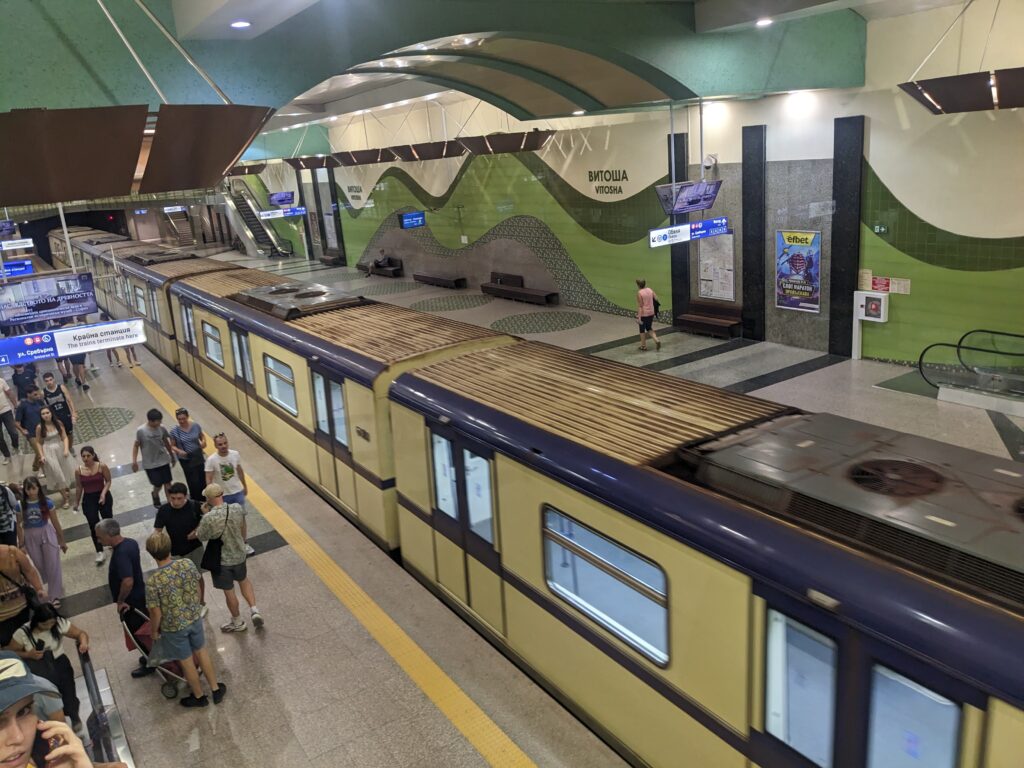
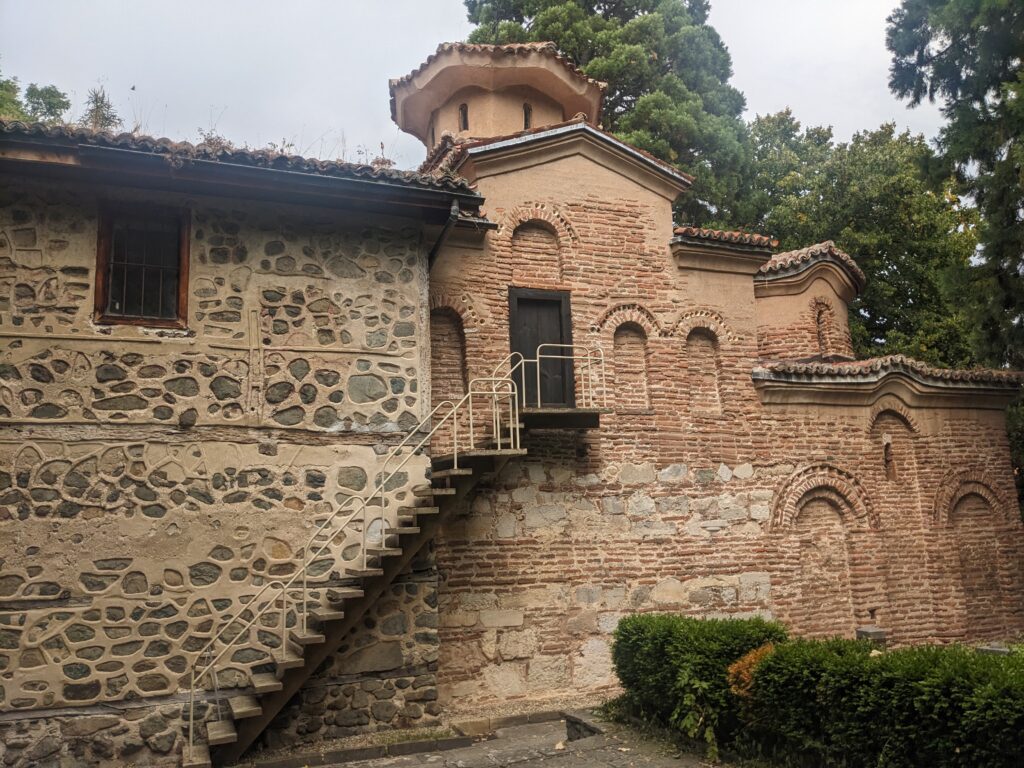
We left Sophia and it’s famed yellow brick cobblestone streets, heading south into the mountains where the temperature dropped and it started to rain. We camped the night on the banks of the pretty Lliina River, not far from Bulgaria’s other main attraction, the Rila Monastery. But that will have to wait until tomorrow.
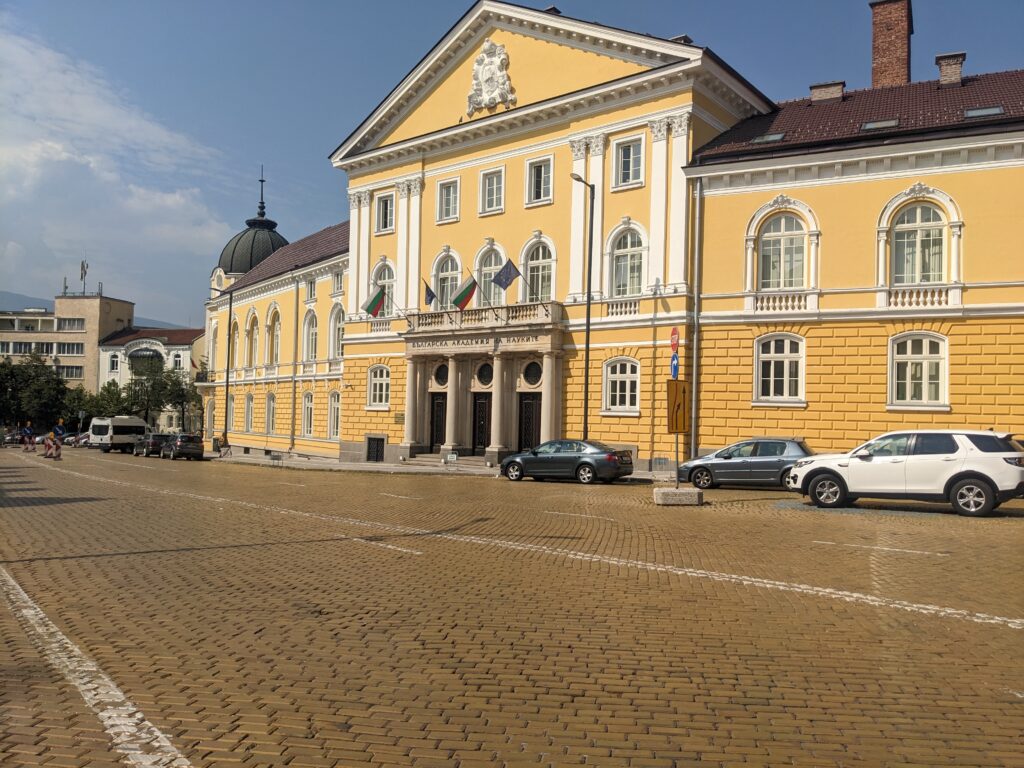
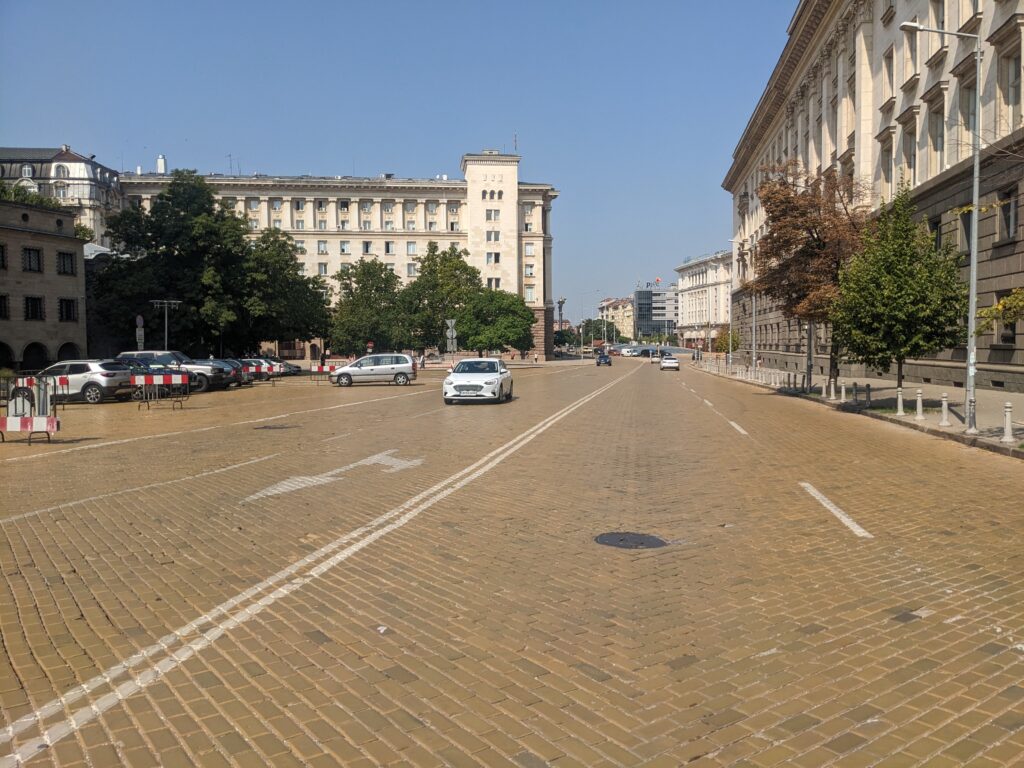
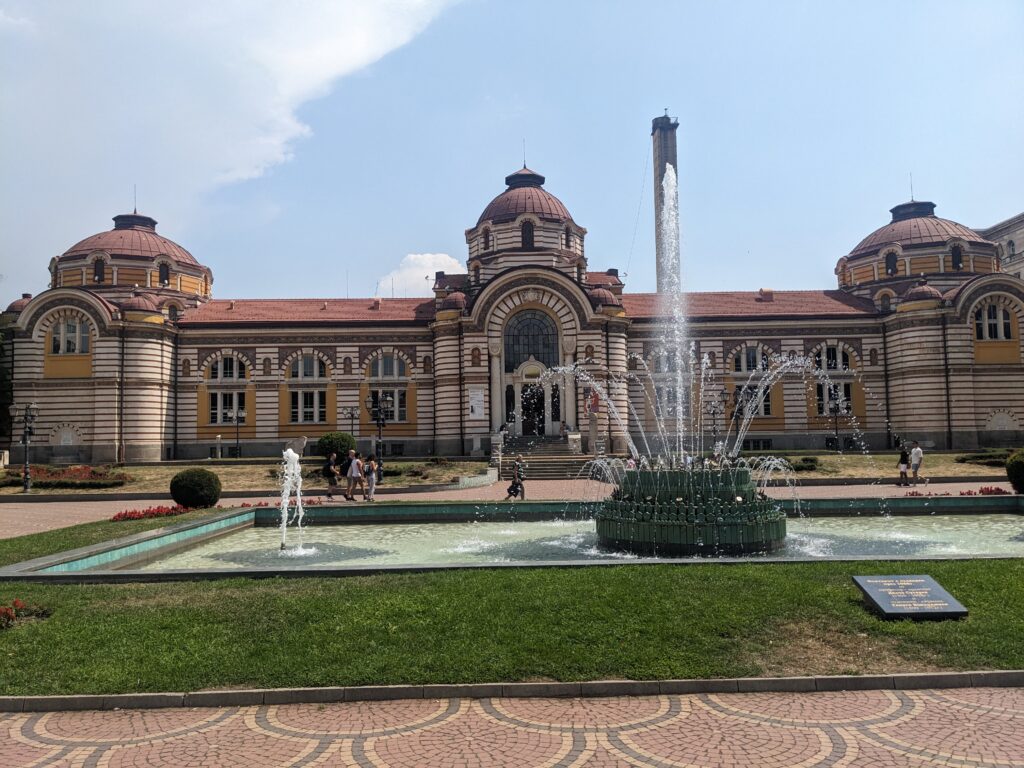
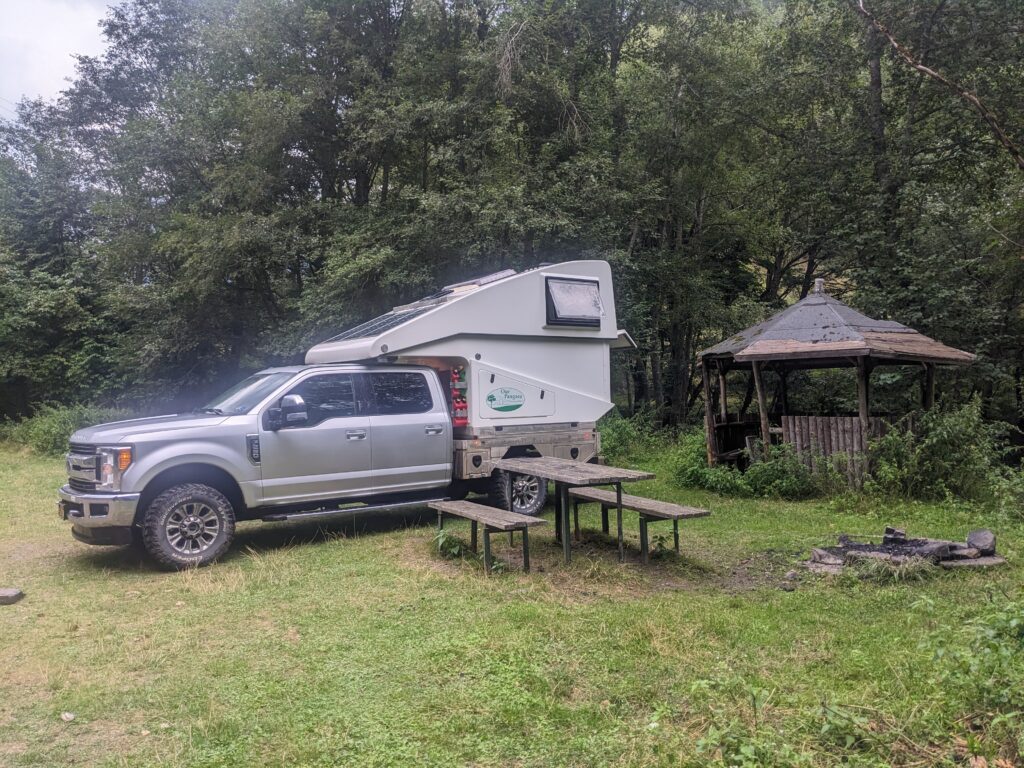
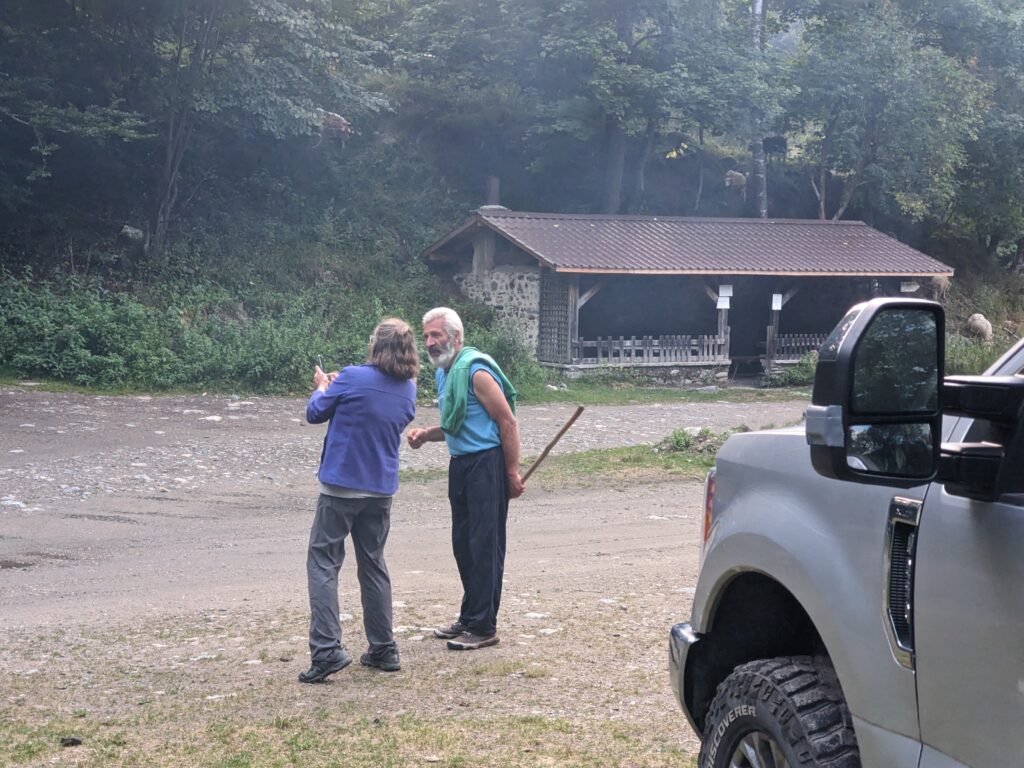
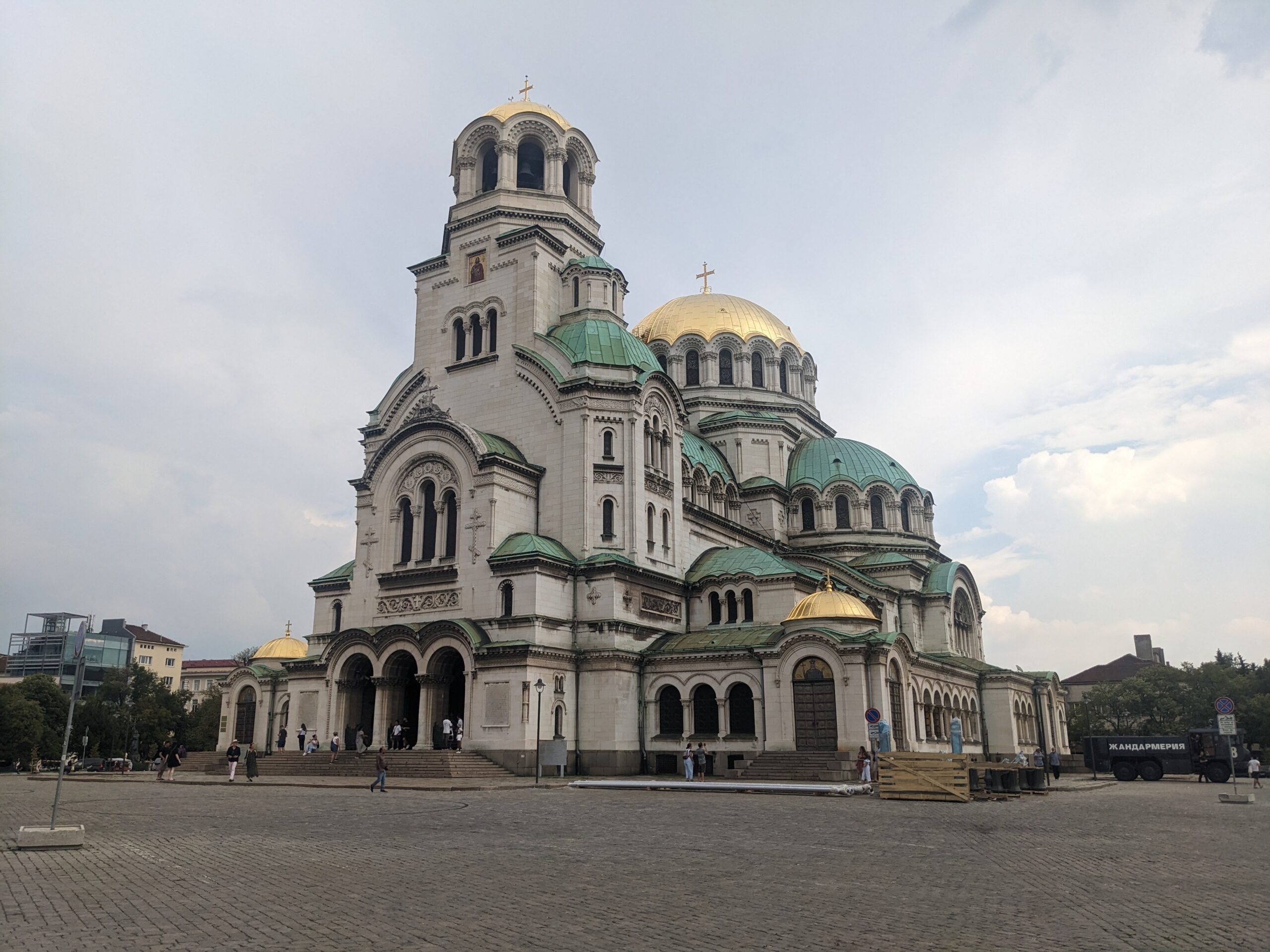
Comments
Bulgaria delivers — No Comments
HTML tags allowed in your comment: <a href="" title=""> <abbr title=""> <acronym title=""> <b> <blockquote cite=""> <cite> <code> <del datetime=""> <em> <i> <q cite=""> <s> <strike> <strong>